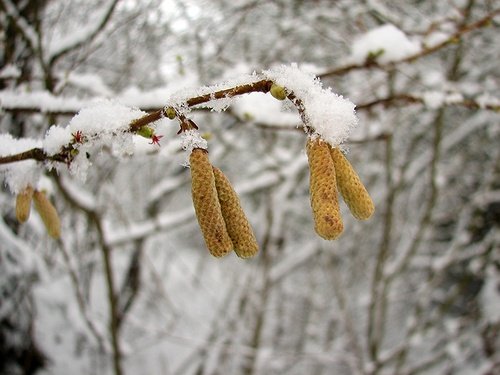While the Winter can be a beautiful, picturesque time of year, it can also be a very popular time of year for severe weather conditions. Wind, sleet, snow, you name it, the list goes on. This is the time of year you see all of those advisories on the news and through the various weather channels too. But what do they all mean and how do they differ? What’s the difference between a Winter Weather Advisory and a Winter Storm Watch?
Although so far our Winter has been extremely mild, here are some Winter Weather Alerts from the National Weather Service that you should be aware of, and get familiar with, as the season goes on.
- Heavy Snow – Heavy snow refers to snowfall accumulating to 4" or more in depth in 12 hours or less, or snowfall accumulating to 6" or more in depth in 24 hours or less.
- Advisory – Highlights special weather conditions that are less serious than a warning. They are for events that may cause significant inconvenience, and if caution is not exercised, it could lead to situations that may threaten life and/or property.
- Warning – A warning is issued when a hazardous weather or hydrologic event is occurring, is imminent, or has a very high probability of occurring. A warning is used for conditions posing a threat to life or property.
- Watch – A watch is used when the risk of a hazardous weather or hydrologic event has increased significantly, but its occurrence, location, and/or timing is still uncertain. It is intended to provide enough lead time so that those who need to set their plans in motion can do so.
- Snow Advisory – This type of advisory is issued when a low pressure system produces snow that may cause significant inconveniences. It does not meet warning criteria and if caution is not exercised could lead to life threatening situations.
- Storm Watch – A storm watch is released for an increased risk of a storm force wind event for sustained surface winds, or frequent gusts, of 48 knots (55 mph) to 63 knots (73 mph), but its occurrence, location, and/or timing is still uncertain.
- Wind Advisory – A wind advisory is stating that sustained winds can reach 25 to 39 mph and/or gusts to 57 mph.
- Wind Chill Advisory – A wind chill advisory is sent out when the wind chill could be life threatening if action is not taken.
- Wind Chill Warning – This warning is released when the wind chill is life threatening.
- Winter Storm Warning – This type of warning means a winter storm is producing, or is forecast to produce, heavy snow or significant ice accumulations.
- Winter Storm Watch – This type of watch is released when there is a potential for heavy snow or significant ice accumulations, usually released at least 24 to 36 hours in advance.
- Winter Weather Advisory – This advisory is sent out when a low pressure system produces a combination of winter weather (freezing rain, snow, sleet, etc.) that present a hazard, but do not meet warning criteria.
[Source: The NOAA’s National Weather Service]










